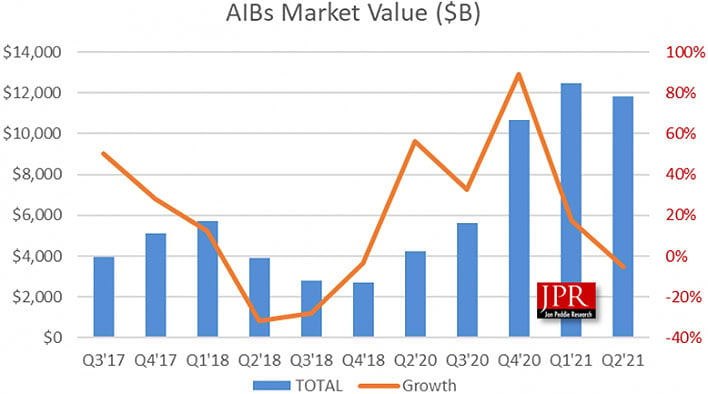In the world of video production and post-production, the graphics processing unit, commonly known as the GPU, plays a critical role that cannot be ignored. With the growth of HD content and sophisticated visual effects, a high-performance GPU has become an essential tool for video editors and filmmakers. Unlike the central processing unit, which handles basic computing tasks, the GPU is tailored for handling complex calculations needed for rendering graphics and boosting visual processes.
The GPU market has developed rapidly, with a variety of manufacturers competing to provide cutting-edge technology that improves the editing workflow. As software developers create more sophisticated editing applications, the need for powerful GPUs continues to grow. This has led to advancements that enable quicker rendering times and more efficient editing processes, allowing creators to focus on their craft rather than waiting on their technology. Recognizing the significance of the GPU is essential for anyone involved in video production, as it directly impacts efficiency and overall output quality.
Understanding GPU Architecture
A Graphics Processing Unit, or Graphics Processor, is engineered to proficiently process and render images, animations, and clips. Unlike a CPU, which runs a constrained series of tasks one after another, GPUs can handle numerous of processes at the same time. This parallel computation capability makes GPUs uniquely well-suited for tasks that require rapid arithmetic operations, such as rendering graphics or executing intricate modifications in video editing.
The architecture of a GPU is made up of many lesser elements, which are charged with performing operations in concurrent. These elements are fine-tuned for arithmetic calculations involved in producing images, such as addition, product calculation, and pixel shading. Additionally, GPUs have elevated data transfer rates, permitting them to rapidly read and write large amounts of information. This is essential in multimedia projects and rendering, where high resolutions and various effects can necessitate substantial data throughput.
As the GPU market advances, manufacturers keep create in structural development to improve capabilities and effectiveness. Modern GPUs incorporate state-of-the-art features such as immediate ray tracing, AI-based processing, and improved power management. These innovations permit video editors to handle more advanced tasks, optimize operations, and provide high-quality results in shorter durations. Knowing the structure of GPUs helps users recognize the engineering behind video editing and production systems.
GPU Industry Trends in Video Post-Production
The Graphics Processing Unit industry has witnessed significant expansion in recent times, largely influenced by the rising need for high-quality video material. As developers transition to more aesthetically complex tasks, the requirement for robust graphics processing units that can handle demanding production jobs has become crucial. This has led to a surge in advancements and aggressive costs among major suppliers, making advanced visual technology more available to both beginner and expert editors.
Moreover, the increase of 4K and 8K film formats has pushed the graphics processing unit industry to adapt plus transform rapidly. As film quality expectations escalate, GPUs are now being designed with sophisticated capabilities aimed at improving rendering speeds and improving real-time performance. This trend has encouraged users to invest in premium visual cards to ensure they can meet the demands of modern video creation while upholding productivity.
Finally, the rise of cloud-based video editing solutions has also influenced the graphics processing unit market. As more experts move their processes to cloud platforms, the need for robust graphics processing units in data centers has grown. This shift not only supports team-based post-production but also promotes ongoing improvements in GPU tech, as suppliers seek to provide more rapid and more effective computing performance to satisfy the needs of a expanding user base.
Choosing the Suitable GPU for Your Specific Requirements
Determining a suitable GPU for film editing and rendering involves grasping one's individual requirements. Consider how complexity regarding the projects you typically handle. In case you are engaged with 4K footage, multiple streams, or complex effects, a stronger GPU might boost performance & reduce rendering times. Evaluate whether your work is inclined to color grading, visual effects, and motion graphics, because each area may benefit from different GPU capabilities.
Another critical factor is compatibility with the software you intend to use. gpuprices like Adobe Premiere Pro, DaVinci Resolve, & Final Cut Pro have varying extents of optimization for different GPUs. Investigate which GPU models are recommended for the software you choose, since this can significantly impact your editing workflow. Additionally, take into account the memory bandwidth & VRAM, as these specifications will affect how effectively the GPU can handle extensive data and complicated tasks.
Finally, maintain an alertness on the current trends in the GPU market. Prices can change based on availability & demand, so it is beneficial to understand the market landscape before making a investment. Look out for new releases that may offer better performance or value. By carefully assessing one's editing needs and aligning them with the right GPU, you can secure a smoother and more efficient video editing experience.

